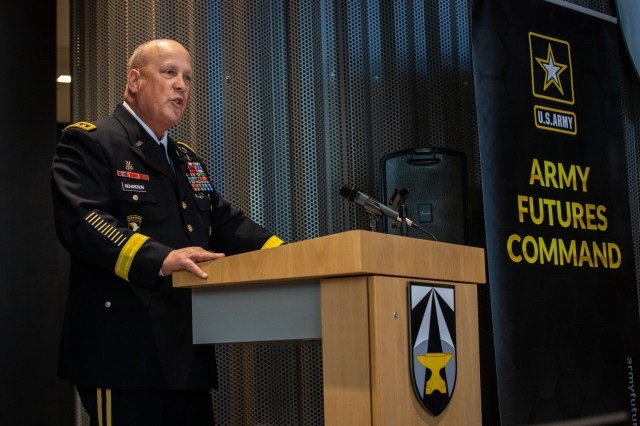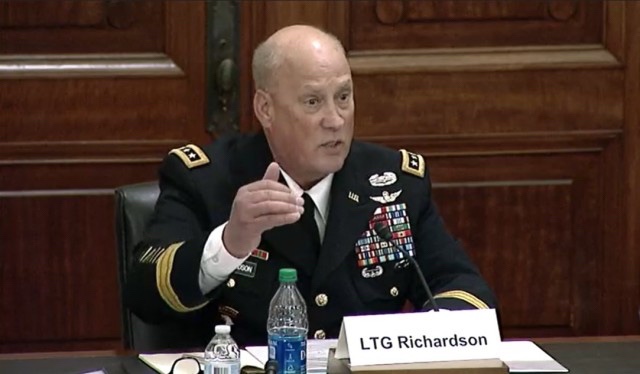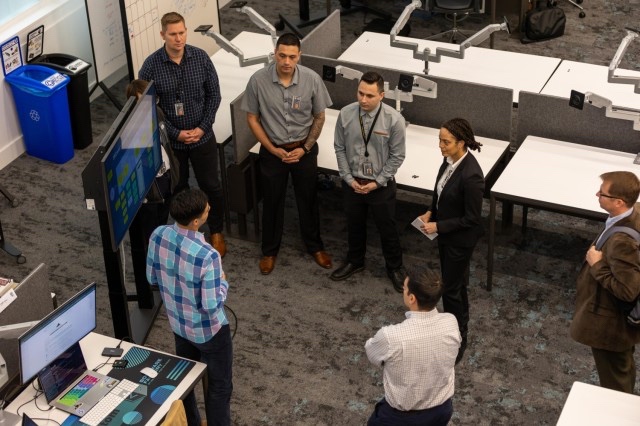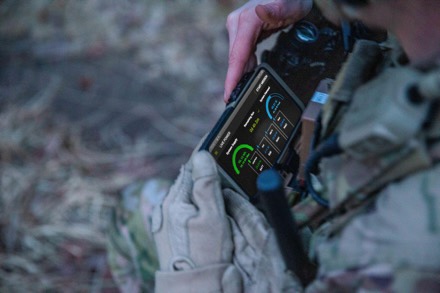
AUSTIN, Texas — U.S. Army Futures Command leadership provided testimony to Congress this week on the importance of advancing Army modernization objectives, particularly given the current threat landscape.
“Innovation is about more than materiel,” said Lt. Gen. James M. Richardson, Acting Commanding General of Army Futures Command, while speaking to the Senate Armed Services Airland Subcommittee on May 10.
“Armies win or lose by a combination of their doctrine, organization and equipment,” Richardson explained, noting that “all three start with AFC.”
“We develop concepts that become doctrine, design future organizations and develop requirements for materiel, all based on assessments of the future operational environment, emerging threats and technologies,” Richardson said.
Richardson joined the Honorable Douglas Bush, Assistant Secretary of the Army for Acquisition, Logistics and Technology and Col. Christopher Grice, Director of Materiel for the Army G-8, in speaking at the Senate Armed Services Committee regarding the Fiscal Year 2023 Army Modernization Program. Richardson, Bush and Lt. Gen. Erik C. Peterson, Deputy Chief of Staff for the Army, G-8, are scheduled to present a similar overview of Army modernization activities and FY 2023 budget plans to the House Armed Services Subcommittee on Tactical Air and Land Forces on May 17.
The hearing emphasized the need to continue investing strategically in modernization and the streamlining of acquisition processes, particularly for mission-critical capabilities in the areas of long-range precision fires, air and missile defense, network and future vertical lift.
Members of Congress and Army leaders also stressed the criticality of supporting Army organic industrial base productivity and maintaining optimal readiness levels amid ongoing conflict in Ukraine.

Richardson, Bush and Grice additionally put forth written testimony that articulated the Army’s intent to “achieve overmatch against all potential adversaries.”
Per the testimony, the Army’s FY 2023 budget request “both maintains the readiness of the Army and establishes a sustainable path to transform into the Army of 2030. This transformation will require a strategic pivot from two decades of focus on counterterrorism, toward adaptation to meet our top pacing challenge in China and the acute threat of Russian aggression.”
Army Futures Command’s contributions to the document and testimony illustrate the command’s pivotal role in integrating and synchronizing Army modernization activities.
Working in close coordination with other Army modernization stakeholders, Army Futures Command is accelerating signature systems that align with the Army’s six modernization priorities: Long Range Precision Fires, Next Generation Combat Vehicles, Future Vertical Life, Network, Air and Missile Defense, and Soldier Lethality.
The command expertly assesses how to leverage new technologies, including those that aid in data collection and dissemination, to further Soldier-centered design and the formation of intelligent information ecosystems.
“AFC is helping pave the way to a data-centric Army, fully integrated into a data-centric Joint Force,” Richardson said.
The foundational concepts, requirements, design and testing work of the command – which includes leading Project Convergence, the Army’s dedicated campaign of learning and experimentation – is essential to the Army’s understanding of and preparation for future battlefields.
“AFC is the engine for Army modernization,” Richardson said.
The command’s efforts are not conducted in a silo, however, and it is only through close collaboration with ASA(ALT), Department of the Army headquarters and other Army and Joint Force stakeholders that the command has been able to further development of the 24 transformational systems due to reach the hands of Soldiers by FY 2023.
“Modernization is a team sport,” Richardson underscored.
By Maureena Thompson, Army Futures Command
A video recording of the May 10, 2022 Army Modernization Congressional hearing is available on the Senate Armed Services Committee website.
The full Joint Statement on Army Modernization is available here.



























































































































